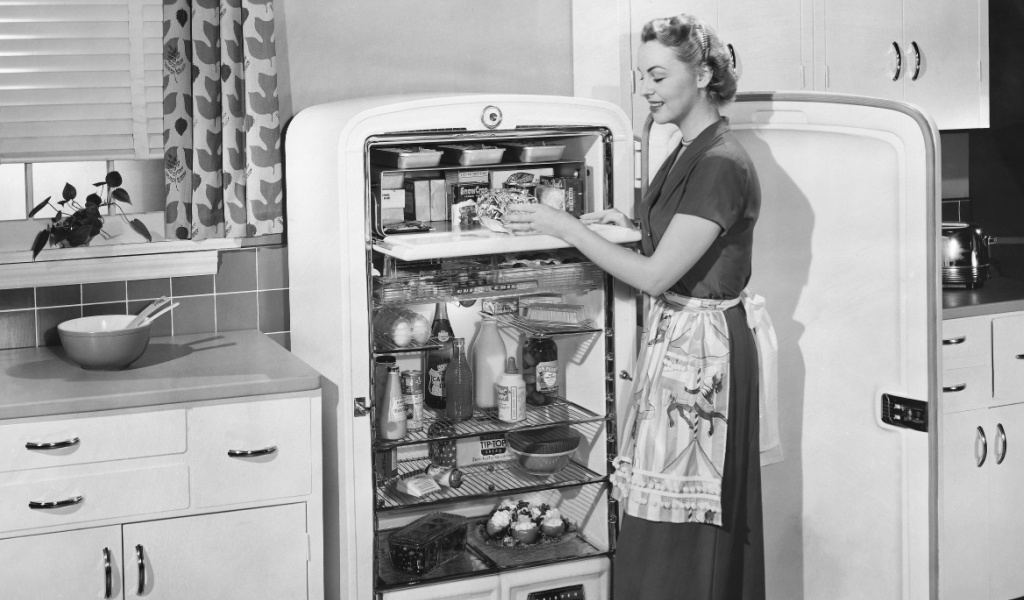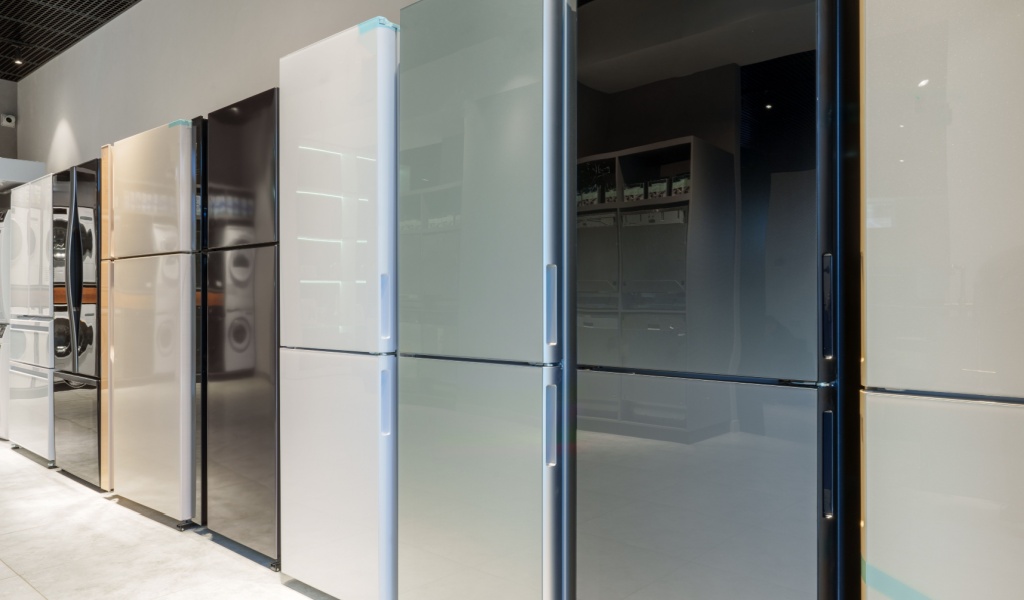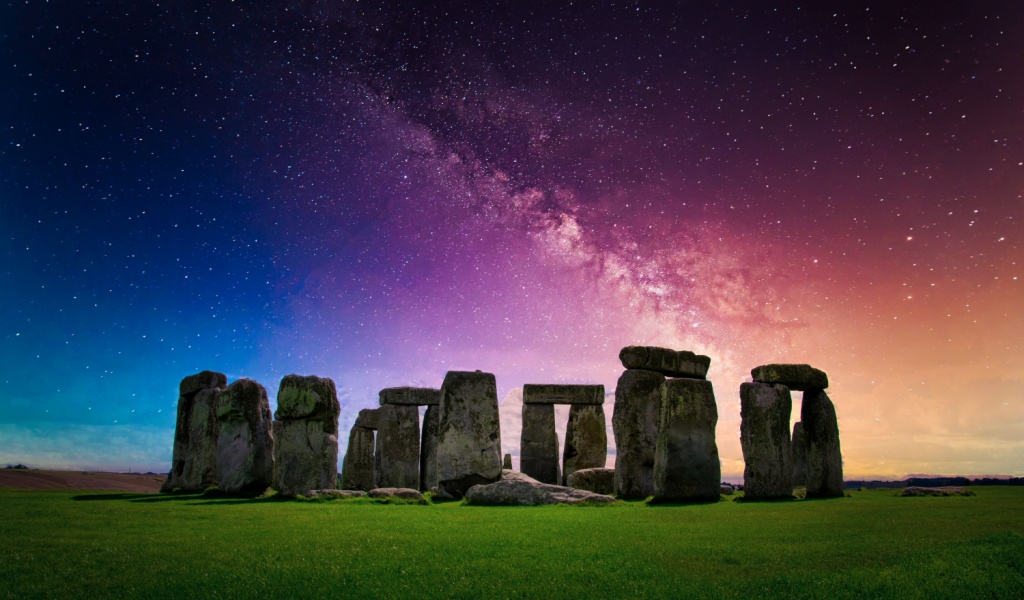One of the perks of living in the modern world is its convenience and how much simpler things that were once so complicated and time-consuming have become. Shopping for groceries every week and hauling them home to shove them in your fridge might seem cumbersome, but have you stopped to think how life would have been without one of those ice-cold miracles? Not many of us would have thought about this because the refrigerator has become such a key feature of our daily routines that it’s hard to imagine life without it!
Keeping food fresh and cold was much more complicated a century ago. Our ancestors had to constantly figure out ways to prevent food spoilage and the risks of foodborne illnesses. People had to cool food using snow and ice found locally or brought down from the mountains. The first cellars for keeping food cold were holes that were dug into the ground, lined with straw or wood, and further packed with ice. These methods were the only known ways of refrigeration throughout most of history.
Then, in the 19th century, refrigeration technology emerged and changed the world, eliminating the need for ice houses and other means of storing food.

What is Refrigeration?
Refrigeration is the process of removing heat from a substance and lowering its temperature. In order to cool food, the refrigerator uses the evaporation of liquids to absorb heat. In a nutshell, it produces cool temperatures by quickly vaporizing a liquid through compression.
Who Invented The Very First Refrigerator?
In 1748, William Cullen, a Scottish professor and physician, demonstrated the first instance of artificial refrigeration. While he observed the cooling effect of rapidly evaporating a liquid into a gaseous state, he did not apply this method in practice.
The mechanical refrigeration process we know today is the result of the work of many inventors in the 1800s. In 1834, Jacob Perkins invented the first vapor compression system, while Professor Carl von Linde patented the process for liquefying gas in the late 1800s.
Thanks to such innovations, commercial refrigeration attracted a lot of interest. In 1913, Fred W. Wolf, an American, invented the first home electric refrigerator. It featured a refrigeration unit at the top of an icebox. The mass production of refrigerators started five years later, in 1918, when William C. Durant made the first home refrigerator with a self-contained compressor.
Let’s take a quick glance into the timeline of how the modern refrigerator came into existence.
- In ancient Egyptian and Indian civilizations, evaporative cooling methods kept food cool. These methods used porous clay pots that allowed water to evaporate, lowering the temperature of the contents.
- In the 18th and 19th centuries, ice houses and ice boxes became popular in North America and Europe. These buildings were specifically designed to store natural ice collected over the winter months. The ice harvested was used to preserve food in metal iceboxes or wooden cabinets lined with insulation.
- In the early 1900s, innovators like Jacob Perkins and Oliver Evans started attempting to create artificial refrigeration systems. Their efforts were phenomenal, but the machines faced limitations in terms of practicality.
- In 1850, Alexander Twining developed the first practical commercial refrigeration machine, which played a key role in food preservation for breweries and restaurants.
- Albert T. Marshall patented the first domestic refrigerator in 1899. It used large and expensive vapor-compression systems.
- In 1913, Frederick William Wolf Jr. introduced the ‘Domelre,’ which stood for ‘Domestic Electric Refrigerator.’ This device ran on electricity, eliminating the need for ice blocks.
- In the 1930s, Freon refrigerators were introduced. They were safer and more efficient refrigerators, and their introduction completely revolutionized the refrigeration industry.
- Following World War II, the presence of refrigerators in American households significantly increased. Since refrigerators also became more affordable, frozen food gained prominence.
- The modern refrigerator comes in many sizes, shapes, designs, and features today. From water dispensers and ice makers to smart technology and much more, refrigerators have made our lives so much more efficient and easy.

Early refrigerators had a significant impact on the environment, particularly on the ozone layer. The system relied on mechanical and chemical processes using toxic gasses like sulfur dioxide and ammonia for cooling. Moreover, they were large, bulky, and needed a lot of maintenance. Furthermore, they also required much attention since refrigerants, as did the temperature settings, had to be added manually. They were also less energy-efficient, leading to higher utility bills. In fact, the first home refrigerator units cost about $500-$1,000, an equivalent to about $7000 to $14,000 in today’s dollars. As you can imagine, a domestic refrigerator was a luxury in its early years!
On the other hand, modern refrigerators are equipped with ozone-friendly refrigerants and are far more energy-efficient and convenient. Thanks to significant technological advancements, modern refrigerators are also compact, sleek, and available in many styles to complement kitchen aesthetics.
The best part? A refrigerator is no longer a luxury household item; almost every household in the US and the world over has one, thanks to its increasing affordability today!



